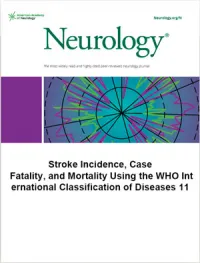The Geneva Stroke Study: ICD-11
24 Feb 2025

A Geneva population-based observational cohort study, using updated ICD-11 criteria—which define ischaemic stroke by imaging-confirmed brain ischaemia, even for transient events—reports an 18.3% rise in ischaemic stroke cases compared to older ICD-10 standards.
Analysing data from 1,186 first-ever strokes (2018–2019) in the Swiss Stroke Registry ⧉, researchers found that annual incidence rose to 127.0 per 100,000 people, with ischaemic strokes accounting for 107.3 cases. MRI scans—used in 91% of ischemic cases—detected milder, shorter-duration strokes that were previously missed. Patients newly diagnosed under ICD-11 were younger and had less severe symptoms than those identified under both ICD-10 and ICD-11.
Case fatality at 30 days was highest for intracerebral haemorrhage (32.5%), followed by subarachnoid haemorrhage (17.2%) and ischaemic strokes (10.8%). The findings suggest that ICD-11 enhances diagnostic accuracy but may place additional strain on healthcare systems due to increased caseloads.
The study alludes to future research to evaluate the economic and organisational impacts of this shift.
Stroke Incidence, Case Fatality, and Mortality Using the WHO International Classification of Diseases 11
The Geneva Stroke Study
Authors: Elisabeth Dirren, José Bernardo Escribano Paredes, Julian Klug, Mael Barthoulot, Joel Fluss, Tony Fracasso, George Karun Kurian, … and Emmanuel Carrera
Open Access
Neurology
2025 Mar 11;104(5):e213353 | DOI: https://www.neurology.org/doi/abs/10.1212/WNL.0000000000213353
Web design by Tribal Systems








